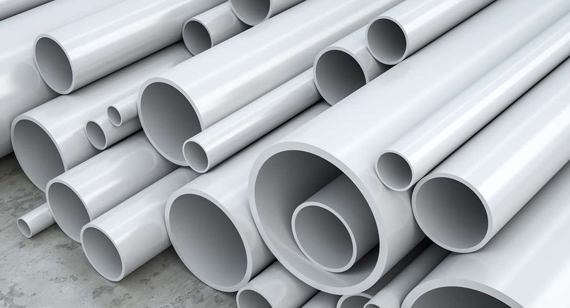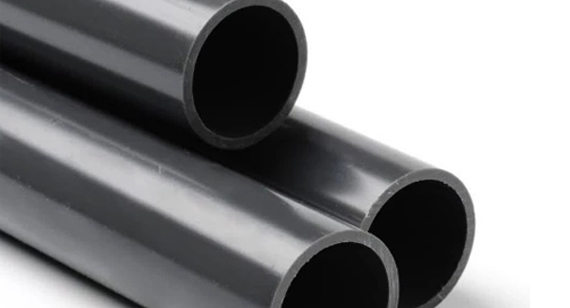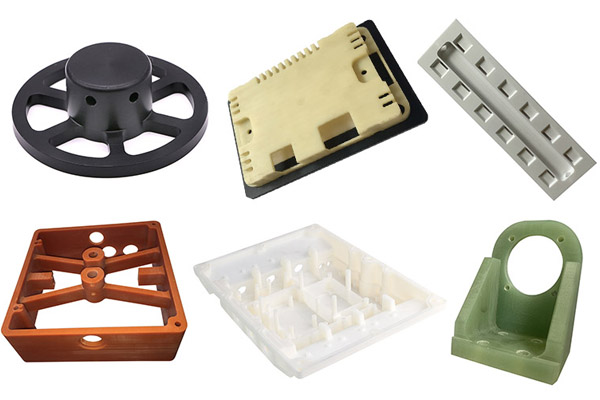15 years one-stop China custom CNC machining parts factory
 213 |
Published by VMT at Aug 28 2024
213 |
Published by VMT at Aug 28 2024
PVC (Polyvinyl Chloride) plastic is a widely used thermoplastic material that has been a cornerstone in various industries since its inception. From construction pipes to electrical cable insulation, from everyday consumer goods to high-end industrial components, PVC stands out for its unique material properties and broad application spectrum, making it indispensable in modern industry. This guide aims to provide an in-depth analysis of PVC plastic, covering its basic properties, types, manufacturing processes, advantages and disadvantages, machining techniques, and application scenarios. Additionally, it will offer insights on how to choose high-quality PVC parts customization services.
PVC plastic, or Polyvinyl Chloride, is a polymer derived from the polymerization of vinyl chloride monomer. It is distinguished by its excellent physical and chemical properties, such as grease resistance, cost-effectiveness, superior tensile strength, and flame retardancy, making it a standout among plastic materials. PVC is highly versatile and easy to process, allowing it to be formed into various shapes and sizes through multiple manufacturing methods to meet the demands of different industries.

Grease Resistance: PVC plastic resists grease and oils, making it suitable for environments where frequent contact with these substances is expected.
Cost-Effective Solution: Compared to other high-performance plastics, PVC is relatively low-cost, making it a preferred material for budget-conscious projects.
Superior Tensile Strength: PVC has a high tensile strength, allowing it to withstand significant pulling forces without breaking, ideal for components that need to endure external forces.
Flame Retardancy: PVC is self-extinguishing when exposed to fire, which helps in reducing fire hazards.
Durability in Harsh Conditions: PVC has good weather resistance, capable of withstanding UV rays, rain, and other natural elements, maintaining long-term stability.
Impact and Corrosion Resistance: PVC plastic is resistant to impact and corrosion, making it suitable for various harsh working environments.
Lightweight: Compared to metals, PVC plastic is lightweight, facilitating easy transport and installation.
Wear Resistance, High Steam Barrier Ability, and Dielectric Strength: These properties make PVC widely used in packaging, electronics, and other fields.
Excellent Resistance to Inorganic Chemicals: PVC can resist many inorganic chemicals, maintaining stable material performance.
Flexibility: PVC plastic can have its hardness and softness adjusted by adding plasticizers, catering to different application scenarios.
PVC plastics can be categorized into several types based on their processing methods and performance characteristics:
UPVC (Unplasticized): PVC without added plasticizers, known for its high hardness and strength, commonly used in pipes, windows, and other construction materials.

Plasticized PVC: PVC that has been softened by adding plasticizers, enhancing flexibility and processing performance, often used in wires, cables, and hoses.
PVC-M (Modified): Enhanced PVC with improved strength and toughness, suitable for applications requiring higher load-bearing capacity.
PVC-C (Chlorinated): Chlorinated PVC with increased heat and chemical resistance, often used in high-temperature pipes.
PVC-O (Oriented): Strengthened PVC through stretching, offering increased strength and impact resistance, used in specialized piping systems.
| Rigid PVC | Flexible PVC | ||
| Strengths |
Limitations |
Strengths |
Limitations |
|
Low cost & high stiffness |
Difficult to melt process |
Low cost, flexible & high impact strength |
Properties can change with time, due to plasticizer migration |
|
Intrinsic flame retardant |
Limited solvent stress cracking resistance |
Good resistance to UV, acids, alkalis, oils and many corrosive inorganic chemicals |
Attacked by ketones; some grades swollen or attacked by chlorinated and aromatic hydrocarbons, esters, some aromatic ethers and amines, and nitro- compounds |
|
FDA compliant & also suitable for transparent applications |
Becomes brittle at 5°C (when not modified with impact modifiers and/or processing aids) |
Good electrical insulation properties |
Tends to degrade at high temperatures |
|
Better chemical resistance than plasticized PVC |
Low continuous service temperature of 50°C |
Non-flammable & versatile performance profile |
Non-suitable for food contact with some plasticizers |
|
Good electrical insulation & vapor barrier properties |
Easier to process than rigid PVC |
Lower chemical resistance than rigid PVC |
|
|
Good dimensional stability at room temperature |
|||
PVC plastic’s excellent machinability makes it suitable for various processing techniques:
CNC Machining: Includes CNC milling and CNC turning, offering precise control over machining dimensions and shapes, ideal for complex and high-precision PVC parts.

Injection Molding: Involves heating PVC pellets until molten, then injecting them into molds for cooling and shaping, suitable for mass production of complex-shaped PVC products.

3D Printing: With the development of 3D printing technology, PVC materials are also being increasingly used in 3D printing, allowing for rapid prototyping and small-batch production.

Advantages:
Cost-Effective: PVC plastic is relatively inexpensive, making it an economical choice for many projects.
High Density: PVC’s high density gives its products a certain weight and stability.
Tensile Strength: Excellent tensile performance allows PVC to withstand significant forces.
Chemical Resistance: PVC offers good resistance to various inorganic chemicals.
Disadvantages:
Poor Heat Stability: PVC decomposes easily at high temperatures, producing harmful substances, which limits its use in high-temperature applications.
Toxicity: Improperly treated PVC waste can pollute the environment, and burning it produces toxic gases. However, selecting eco-friendly PVC materials and proper waste management can minimize its toxic impact.
When machining PVC parts, it is crucial to consider the following techniques:
Use the Right Cutting Tools: Choose appropriate cutting tools, such as carbide or diamond tools, based on PVC's hardness and machining requirements to ensure efficiency and part quality.
Settings Considerations: In CNC machining, set precise cutting parameters like speed, feed rate, and cutting depth to avoid overheating and tool wear while ensuring smooth surface finishes.
Prevent Contamination: PVC machining can produce small particles and debris that may affect the work environment and product quality. Use proper protective measures like dust extraction systems and maintain a clean workspace.
Drilling and Milling: Control the cutting speed and feed rate during drilling and milling to prevent overheating or part deformation. Proper coolant use can also help reduce cutting temperature and improve machining quality.

PVC plastics, with their versatile properties and wide application range, are essential in various industries. Here are some major application scenarios:
Healthcare: PVC is extensively used in the medical industry for producing IV tubes, blood bags, gloves, and other medical supplies, thanks to its chemical resistance and biocompatibility.
Automotive: PVC plays a crucial role in automotive manufacturing, such as dashboards, seat covers, and wire insulation, where its lightweight, wear resistance, and easy processing help reduce vehicle weight and improve fuel efficiency.
Electronics: PVC plastic is used in the electronics industry for making wire and cable insulation, connector housings, and other components, with its excellent dielectric strength and wear resistance ensuring the safety and stability of electronic products.
Sports Equipment: PVC is commonly used in making water sports gear, fitness equipment, and other sporting goods due to its flexibility and water resistance, providing safe and durable gear for enthusiasts.
When selecting PVC parts customization services, VMT, as a professional CNC machining factory, offers high-quality, precision PVC parts customization services. VMT has advanced CNC machining equipment and a professional technical team capable of providing one-stop solutions from design to production, ensuring that each PVC part meets customer requirements and industry standards through advanced machining technology and strict quality control processes.

PVC plastic, with its outstanding performance and wide application range, plays a significant role in modern industry. By gaining a deep understanding of PVC’s material properties, processing techniques, and application scenarios, we can better utilize this material to provide high-quality solutions for various industries. Additionally, choosing professional CNC machining services like VMT ensures the precision and quality of PVC parts, meeting diverse customer needs.
Is PVC Plastic Toxic?
PVC plastic is non-toxic under regular usage conditions, but improperly treated PVC waste can release harmful substances during combustion or decomposition. Therefore, it is essential to manage environmental impacts through proper disposal and recycling practices.
Is PVC a Hard or Soft Plastic?
PVC can be either hard or soft, depending on the addition of plasticizers. Unplasticized PVC (UPVC) is rigid, while plasticized PVC is flexible.
Why is PVC Expensive?
The price of PVC is influenced by various factors, including raw material costs, production processes, and market demand. Compared to other plastics, PVC’s price might be slightly higher due to its specific performance advantages. However, given its broad application range and long-term economic benefits, PVC remains a cost-effective material.
Is PVC Cheaper than Aluminum?
The cost comparison between PVC and aluminum depends on specific applications, specifications, and market conditions. In some cases, PVC may be cheaper due to its lightweight, easy machinability, and cost-effectiveness, while aluminum may offer better performance in terms of strength and corrosion resistance.
Is Stainless Steel More Expensive than PVC?
Stainless steel is generally more expensive than PVC due to its superior corrosion resistance, strength, and aesthetic appeal, making it suitable for high-performance applications. In contrast, PVC’s economy and ease of processing make it widely used in various fields.
Which PVC is Food Grade?
Food-grade PVC refers to PVC material that meets food safety standards, typically used for making containers, packaging, and other items in direct contact with food. Ensure the material complies with relevant food safety regulations in your country or region when choosing food-grade PVC.
